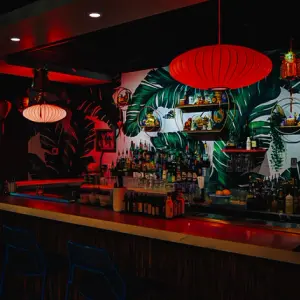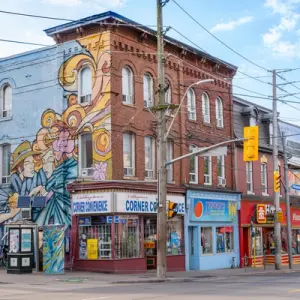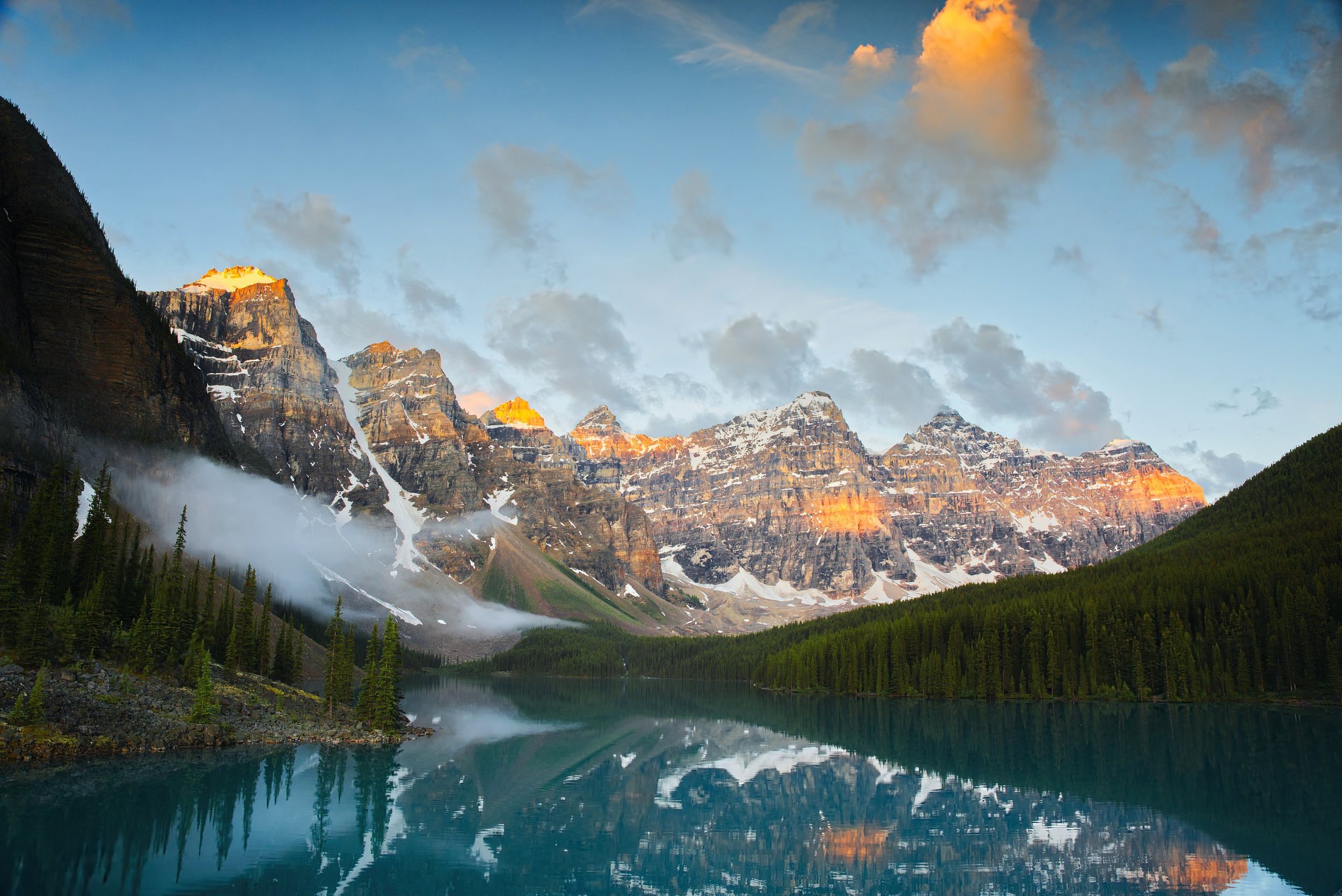
Destinations
From Easy Walks to Summit Grinds: Favourite Hikes in Banff National Park
Discover the breathtaking beauty of Banff National Park through a selection of hikes, where stunning landscapes and invigorating trails help make the park a hiker’s paradise.
Share
Mitchell Leong is a naturalist and adventure/wildlife photographer who is proud to call the Canadian Rockies home. After a life-long pursuit of playing soccer and struggling with mental health, Mitchell found himself needing a reset button in his life, and that came in the shape of the mountains.
He developed an appreciation for the outdoors, the wildlife, a sense of pride and an obligation to protect it. As he found himself surrounded by amazing wildlife and landscapes, he felt the need to capture those fleeting yet magical moments. He realized photography can serve as a bridge of empathy and understanding between the natural world and, not only himself but others.
The preservation of the natural environment and education of its importance to humanity has become his creed and promise.
Banff National Park, also known as Canada’s first national park, is home to some of the world’s most serene views. The resilient yet fragile environment stretches 6,641 square kilometres and ranges from ‘U’ shaped valleys, monumental peaks, frigid glaciers, and dense lush forests. This incredibly pristine ecosystem is graced with an equally incredible amount of biodiversity. 844 species of plants, 311 species of birds, 19 species of fish, and over 50 species of mammals including bears, wolves, and cougars reside in the park. Famous for its mountains, the Canadian Rockies are largely constructed of sedimentary rock which has been folded, cemented and faulted over 100 million years ago. These impressive towers cover the land, some scaling over 11,000 feet in elevation. Equally as extraordinary, Canada wears the crown for the most freshwater lakes found anywhere in the world. This vast capacity of water plays an influential role in casting a stroke on mother nature's canvas by constantly shaping the land.
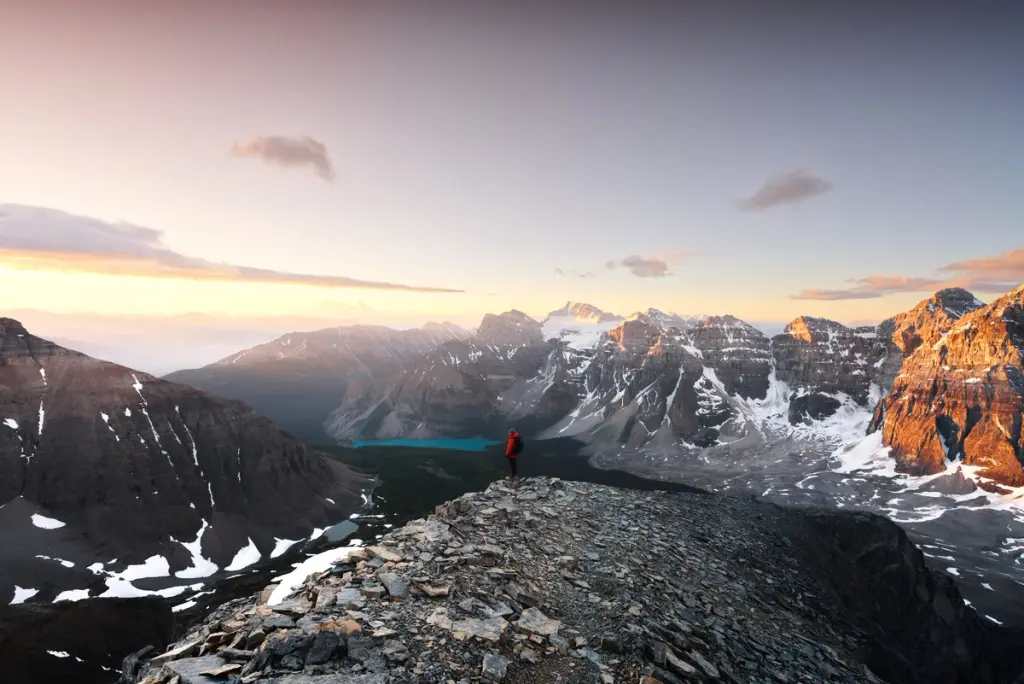
The park's alluring landscape attracts over an impressive 4 million visitors annually and offers endless possibilities to each adventurer called there. The majority of those who make the commute to Banff National Park are drawn to one place in particular and for very good reason. The Valley of the Ten Peaks, a particularly unique wonderland within the national park, steals the hearts of millions each year. These incredible peaks resonate as protectors of the pristine lake that lies at the valley bottom. The infamous Moraine Lake never ceases to amaze, whether under the stars, a fiery sunrise, a mid-day reflection, or detoxicating sunset. Here, at the heart, rests an indescribable landscape, boasting unparalleled power to conjure feelings of reverence of those who step foot there. There are options in the area for all skill levels, ranging from scenic nature walks to exhilarating mountaineering objectives. One’s journey can begin by taking a short walk up the infamous rock pile or exploring the lakeside which immediately draws close to the frigid waters. Alternatively, one can venture to Larch Valley and Sentinel Pass, on a hot summer’s day, to catch the plethora of wildflowers in the alpine meadow, or on a cool autumn morning to immerse in the cornucopia of golden larches. Though, if it were summiting that pull on your heartstrings, consider a technical scramble up either the Tower of Babel or Eiffel Peak. However, those who have signed deals with the sky, where the air thins, may venture above 11,000 ft into the clouds to summit one of Alberta’s highest mountains, Mount Temple.
“Please don’t leave me… as everyone else did. I can’t imagine another day alone in the dark. To be tired, until it’s time to fall asleep.”
“I will always be with you. I know who you can be. I repent the might of loneliness and rejection. Consumed once too, by the sadness that leaves you broken in your bed. Nevertheless, be brave enough to love yourself again. Trust that one day the vice that grounds you is nothing compared to the vindication that will set you free. Being human means losing everything we love most, but you wouldn’t ask to be anything else, would you? So come with me, I know of a place that can set you free. Live the life that you deserve.”
“How do you know I won’t end up like last time, back in the darkness? What if you’re wrong?”
“Well if I’m wrong then, what more can you lose? You have to trust me.”
“Okay, where?” the boy replied.
Moraine Lake Rockpile & Shoreline trail (3km / 30m - Easy)

The undisputed ‘must-see’ landscape found anywhere in the National Park or anywhere on Earth for that matter, is possibly also one of the most easily accessible. A leisurely walk along a well-defined trail from the parking lot weaves through a short stretch of dense trees before opening up to a view like no other. Atop the rockpile is Moraine Lake in its purest form, still water crowned by ten monumental peaks, cradled by lush mossy green forests with the subtle sound of streams. Words of any order always seem to fall a little bit short when attempting to describe the feelings this setting evokes in you. Moraine lake, much like many other glacier-fed lakes in the area, gets its vibrant colours from rock flour from the eroding glaciers above. Rock flour is fine, and silt particles and sediments are created when rocks underneath ice are ground down by the immense weight and movement of glaciers. These particles stay suspended in the water, which in combination with the reflection by the sunlight, paint the water a sky-blue to emerald-green depending on the season and year.
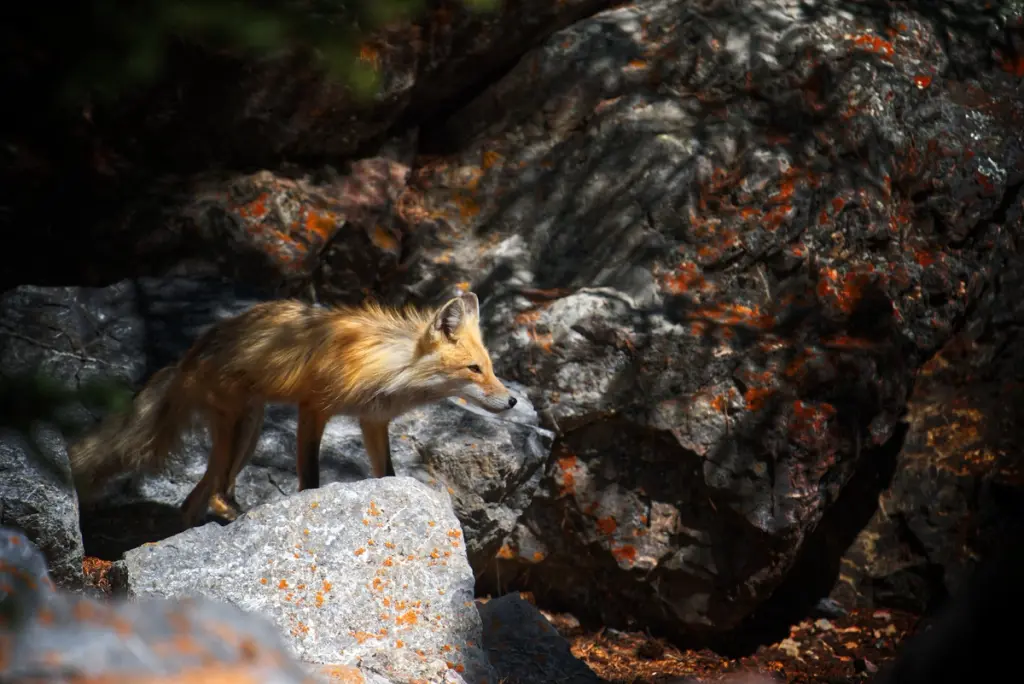
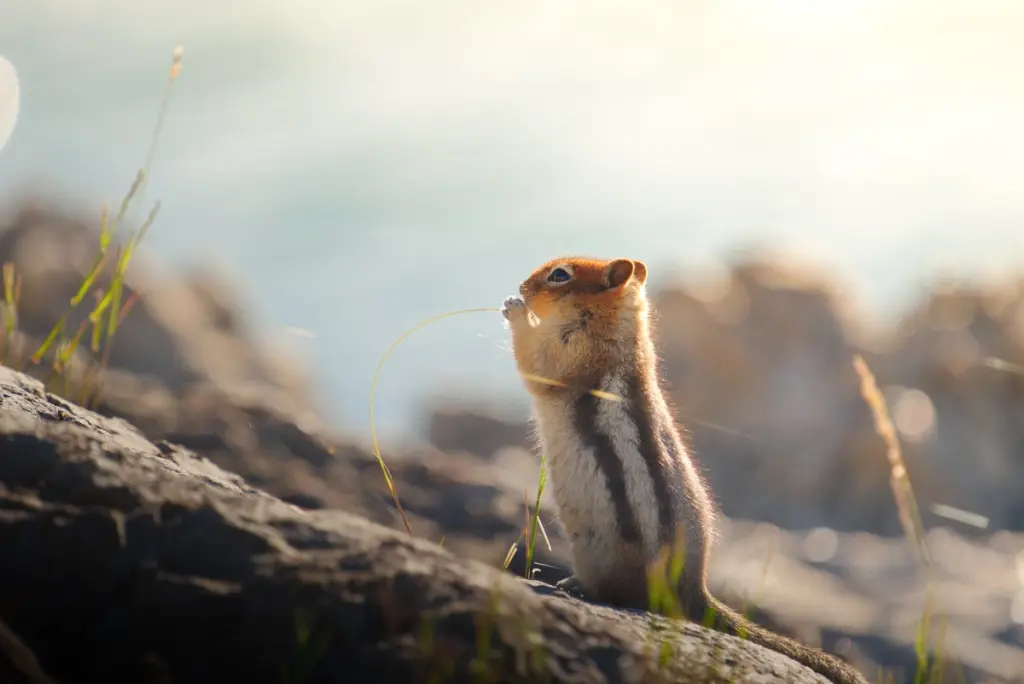
For those looking to further explore the landscape, you can also embark on the shoreline trail. Starting by the canoe dock, a weaving trail stitches the turquoise-coloured water and the incredible forest all the way to the meltwater stream that feeds the lake on the southwest side. On a scorching hot day, the crisp ambient air coming off the surface combined with the ever-so-enticing hues make the cold glacier water irresistible. Along the way, you'll find that it isn't uncommon to cross paths with the residents that call this place home. Pikas, marmots, squirrels, chipmunks, bears and many incredible species of birds offer the opportunity to capture some unforgettable photos and moments. Along the Shoreline Trail, one can find breathtaking angles of the magnificent Mount Fay and Fay Glacier that crown its peak. Along with the many options to adventure on foot, one of the most sought-after activities in the National Park is a canoe paddle. Soaking in the majestic mountains surrounding you as you move as one with the magical water of Moraine Lake indeed offers a completely different perspective. Canoes are available to rent at the docks or you may bring your own non-motorized watercraft.
“What are you most afraid of, kid?”
“Myself – I told them my secrets, hoping they’d understand. I thought that I could be someone to all of them, or maybe just to someone. It wasn’t until I was alone that I heard a reply.”
“What did they tell you?”
“They told me a boy who was not embraced by the village should burn it down to feel its warmth.’ I felt scared, so my dreams fell into secrets. Now that I’m here with you, I thought you’d show me the light after all the dark, but why are we here? Why now, still in darkness?”
Larch Valley & Sentinel Pass (12km round trip / 735m - Moderate)
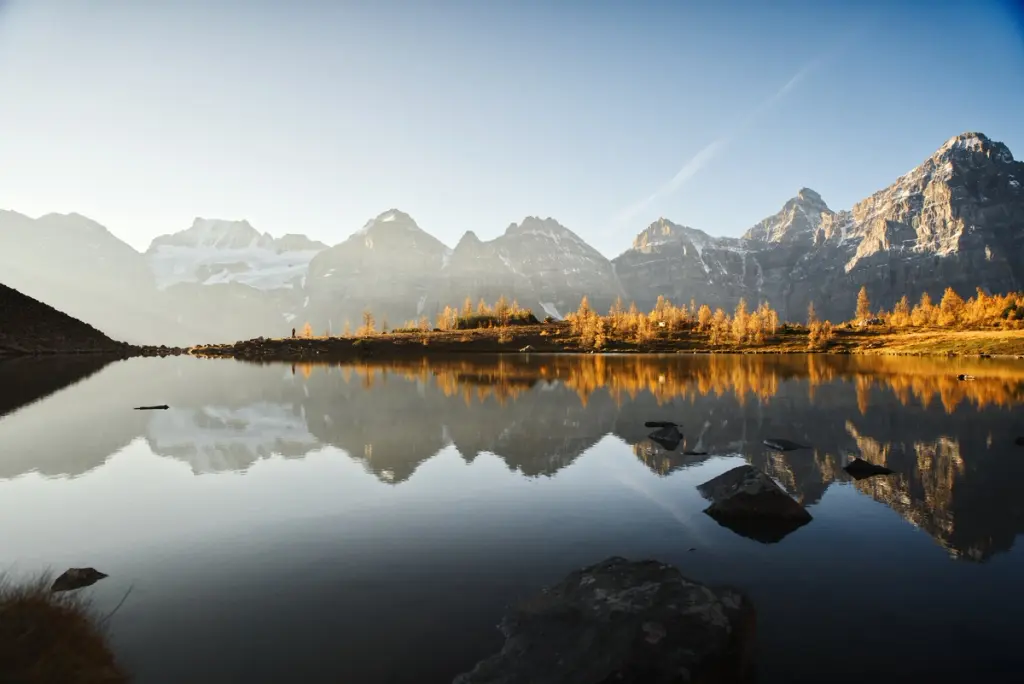
Larch Valley and Sentinel Pass can blur the divide between fact and fiction. Mossy green forests, mountain streams, glacier lakes, and wildflower meadows are the enchantments that entice adventure seekers from all over the globe. The trail up to Larch Valley starts beside Moraine Lake, a short jaunt past the canoe docks. As you pass the lodge and start to make your way through the surreal forest, the sound of mountain streams creates an ethereal ambience. Several switchbacks assist with the elevation gain on your trek. Though once you leave those switchbacks behind, the remaining kilometres are through one of the largest larch forests found anywhere in the National Park. Wildflowers will begin to appear on either side of the trail, escorting you as a welcoming committee to the hills beyond. There, the trees start to part unveiling the colossal cliffs looming around the meadow. At this point, it’s difficult to ignore the irresistible urge to look back at where you began your ascent. To the south, perfectly framed in the horizon are the Ten Peaks along with the beautiful larches you just arose from.

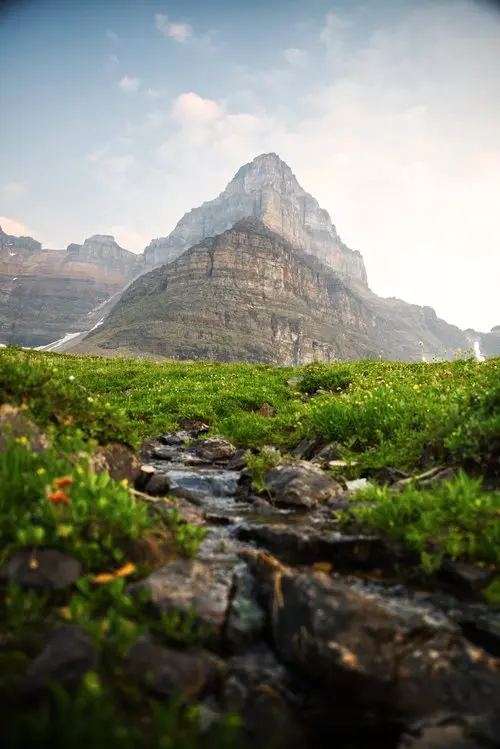

Found throughout the meadow are the Minnestimma Lakes, which are the quintessential representation of what one might think of when imagining an alpine meadow lake. Perfectly still water surrounded by a dense carpet of low grass and wildflowers offers a glass-like reflection of the skyline above. In mid to late September, a change in the trees occurs that ushers us closer to a landscape of almost otherworldly existence. Gold hues blanket the valley, larches shed their green colours and explode in flaming yellow and gold. In combination with a meteoric sunrise, this is what many dreams of when visiting the Valley of the Ten Peaks.
Continuing from the valley, carved into the mountainside are more switchbacks up to Sentinel Pass. This vantage point is an excellent place to contemplate the construction of rocky spires such as the Grand Sentinel. Beyond that, your gaze northward will lead you to Paradise Valley. Both the impressive Mount Temple on your right, and Pinnacle Mountain on your left, looming over either side of the Pass provide a sense of protection and refuge. This panoramic view is further bolstered by the chirps of pikas, and the deafening eerie sounds of avalanches off in the distance. In all of its power and delicacy, this is what makes Larch Valley and Sentinel Pass stand shoulder to shoulder with some of the greatest wonders on earth.
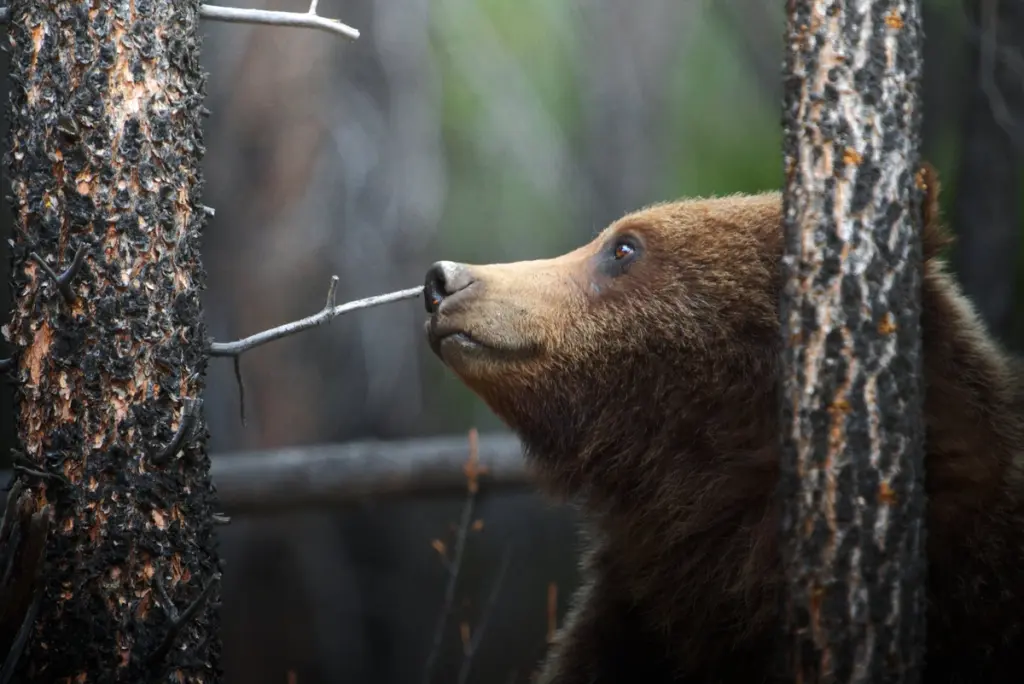
“They don’t get you, but this place will. Here, your secrets can be told with the utmost vulnerability. This time, spoke to those brave enough to listen and capable of understanding such conviction. They surround us now when no one else would dare.”
“The mountains?”
“Yes. You don’t see as the others see, do you? Therefore, a new chapter can be written today, though we must go now, you and I, guided by the moon and the stars. Through the shadows, in the cover of darkness.”
“Why now? I’ve lived a thousand days in the dark; I don’t think I can do another.”
“You'll soon understand, It wasn’t always like this, seeing more clearly in the dark than in the light.”
The Tower of Babel (2.9km round trip / 518m - Moderate to Difficult)

The Tower of Babel is perhaps one of the most well-known and extremely exhilarating scrambles in Banff National Park. This adventure is a rather short objective; however, a considerable amount of relief over a short distance makes this scramble both demanding and unforgiving. Intimidating as it may seem at first glance, it is a great introductory option to scrambling and still presents unprecedented views of the valley below. The trail starts at the bottom of the Moraine Lake rockpile but veers off rather quickly into the trees. As you leave the trail by taking a sharp right turn before a marked cairn, a big scree rockpile will emerge. Here, a quick first impression will be made of what towers above. The route up the incredible quartzite spire is a narrow scree-filled gully. Once you persevere past the rockpile constructed of scree which may seem relentless, you will arrive at the gully. Here, you will find aid by using your upper body against its walls. Sticking to the left side of the gully is a great option for an aided ascent, however, the primary hazard on this route is still present. Rock falls are common and can be triggered both naturally by eroding agents such as wind and water, or anthropogenically. An early start to this endeavour would be ideal to avoid the possibility of said rock fall triggered by others; wearing a helmet and being extremely cautious with every step goes without saying.
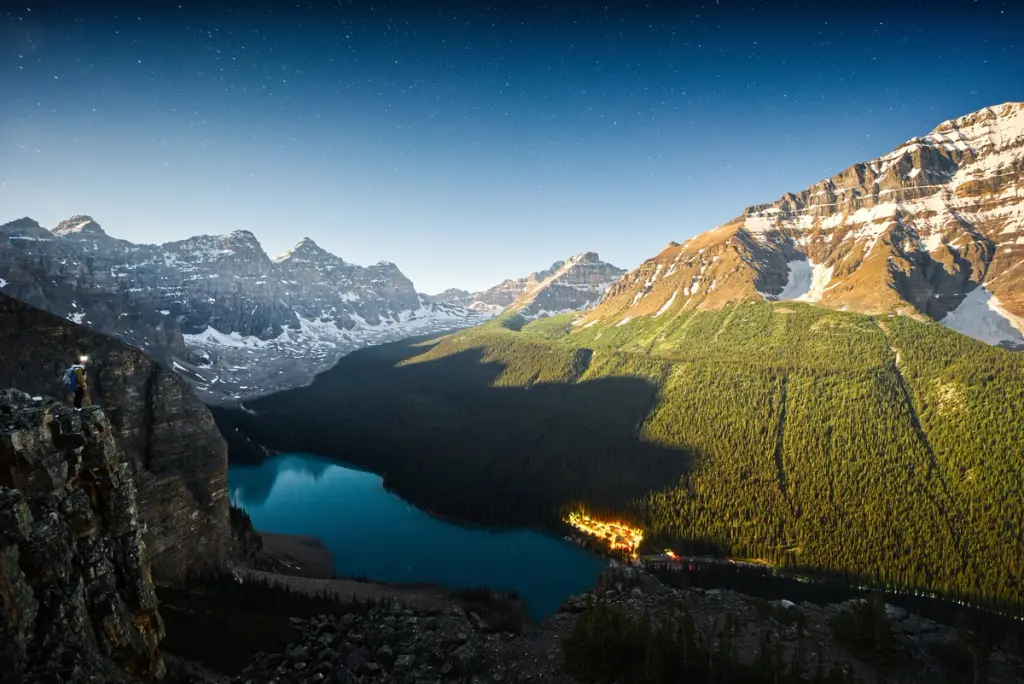
Leaving the gully behind, all that is left is the short final push to the summit. A huge platform awaits you to set foot, as you jump over impressive cracks you'll notice the rocks share a striking resemblance to broken puzzle pieces. Here you will be rewarded with astonishing views of the Valley of the Ten Peaks, and an amazing perspective of Consolation Lakes to the southeast. Seemingly impossible to ignore, standing at the summit you’ll gain a sense of how tall Mount Temple really is as its peak still towers to the north. Gazing at Moraine Lake from this angle of the summit provides a transformational insight as to how both the hydrological and erosional processes that water and sediment take to achieve the astonishing blue hue. Glaciers that crown the peaks are constantly moving, carving and grinding the mountains they sit upon. The mountain walls can be seen crying with water running down the sides to the moraines below. This runoff has picked up the rock flour created by the carving glacier on its way before trickling into the southwest side of Moraine Lake. Unprecedented views in combination with a unique yet exhilarating approach make this a ‘must-do’ when in the area for those looking for a technical challenge.
“The nightmares are expensive, but the memories are free. I hope you find – It’s not that we should escape into the arms of darkness, instead, learn to love ourselves there, when no one else seems to care.”
“But I don’t get it, we all need someone… right? I mean, do you have someone?”
“I did, and at times I felt like I could fly. So I thought – and yet, we all broke the rules for someone, who in the end, broke us too. They broke things in me that haven’t ever been fixed. The fortune of my resurrection had me stood in the very spot you stand now. Every night was a chance to begin again, to find somewhere I felt like I belonged with those who could understand. My secrets spilled as a plea to be forgiven. The answer was in the silence, they said loving you was the only thing I needed, but I had to promise someone, I’d change the world.”
“Who?”
Eiffel Peak (11.3km round trip / 1270m - Moderate to Difficult)
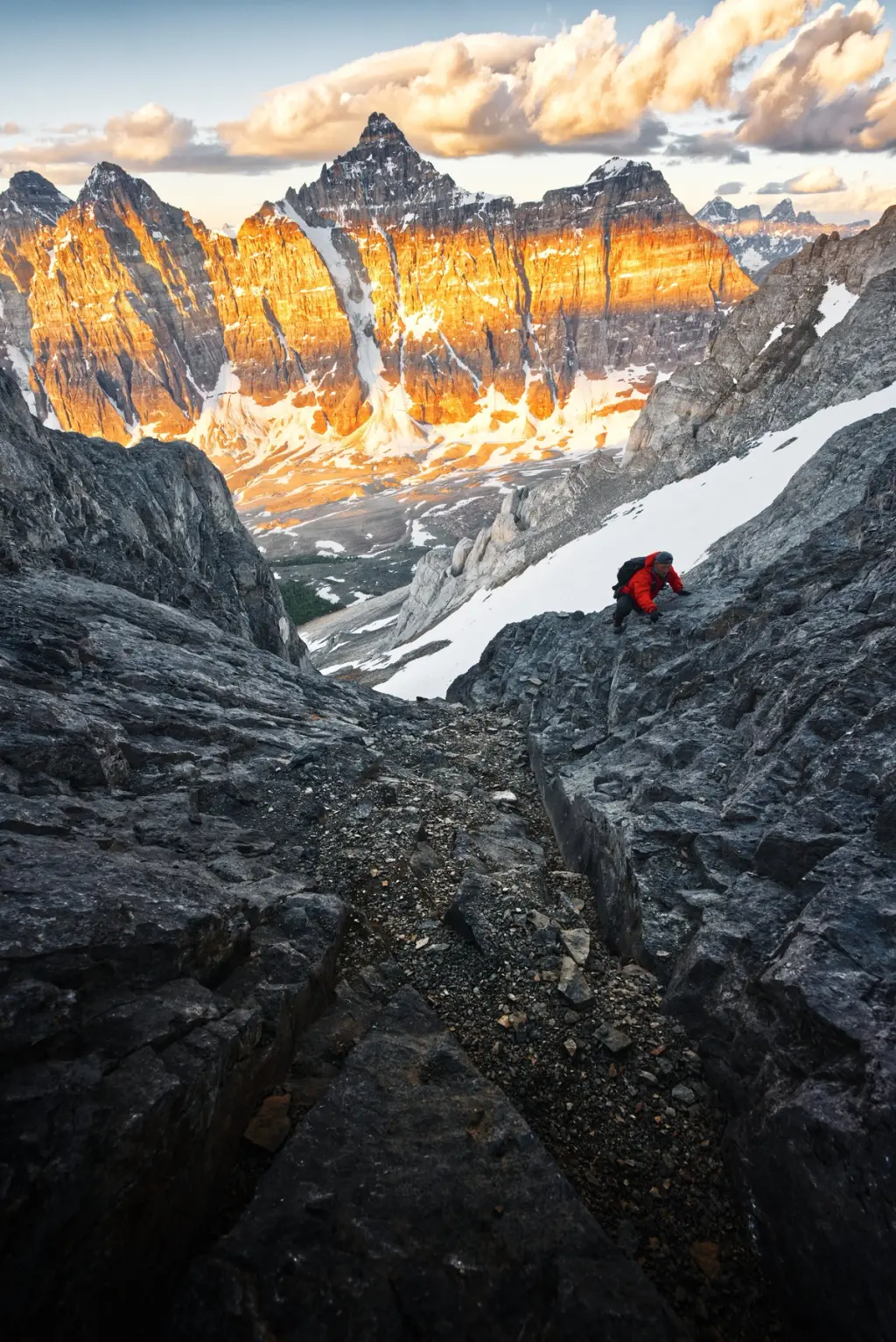
Solitude matters, essential to our very existence, though for some it can be much more, it's the air that we breathe. Not frequented by many who pay visits to the Valley of the Ten Peaks, Eiffel Peak is an excellent option to dodge the crowds. A moderate scramble that offers unobstructed views into Paradise Valley to the north and a unique perspective of glacial processes that trail the backside of Moraine Lake to the south. This trail shares the same route up to Larch Valley, however, your junction takes place before the trees thin at a substantial cairn. You’ll take a left through a narrow yet dense trail and a short stream crossing will give you the reassurance you’ve found the correct path. The peak will start to become visible when you leave the trees behind and start to gain elevation up the skyline ridge. The scramble begins at the base with massive boulders to be negotiated. A faint path marked with cairns will assist your scramble as relief will start to increase. The entire Valley of the Ten Peaks, including Wenkchemna Pass as well as the incredible Paradise Valley, is visible from the summit.

Eiffel Tower, a magnificent monument found just north of the Eiffel Peak summit, is an incredible example of the powers that the elements are capable of. It stands as a lone pillar amongst the surrounding giants. History itself may be found embedded in the rocks at Eiffel Peak and all across the valleys, etched before our very eyes. Fossil evidence and signs of marine creatures remind us of a time that is incomprehensible to the imagination. Animals that had once lived in the depths of a great sea are now rightfully commemorated thousands of feet in the heavens. Standing at the summit constructed by these very fossils, there exists a constant reminder of the looming presence…one that draws you to the peak which trumps the rest in the immediate area. Eiffel is often taken on as the precursor to its brother which blocks the view to the east. Techniques, perspective, and experience that you gain while embarking on this objective are all essential elements required to conquer the next challenge, Mount Temple.
“Your thoughts seem to consume you, as you often forget to enjoy where you are. Take a second to be present. The only thing we own are moments; everything else is borrowed. I once told you being human means losing everything you love, but the moments you choose to share with yourself, others, and the world, are forever. ”
“How can I do that when I feel so lost?”
“You’re not lost. You need to remember yourself, and who you were before the world got to you.”
Mount Temple (16km round trip / 1690m - Difficult)
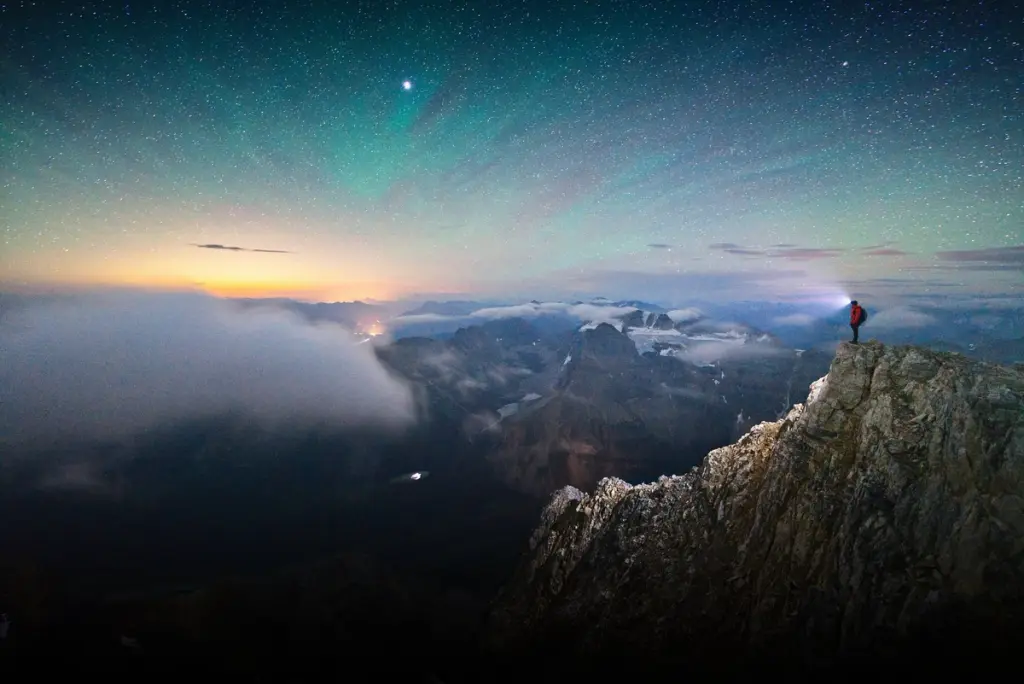
To all the explorers and great crusaders at heart, we know that each place we set foot teaches us something about not only ourselves but in how we see the world. I now welcome you to Banff National Park where Mount Temple awaits, which offers you yet another opportunity on a path of self-discovery. To describe this mountain in one word, Temple is rightfully fitting. It dominates all the surrounding area in height and glory, demanding a certain level of respect and preparation. Classed as a summer scramble, Mount Temple can be quite popular in the warmer months. Part of the “eleven thousand” club of the Canadian Rockies, the peak rises to 11,621 feet (3,543 meters). Due to the incredibly high elevation, with lingering snow and unpredictable weather, the window to the summit can be variable and rather short. It is imperative that all the precautions including fitness, technical ability, alpine education, safety and proactive planning are considered in order to ensure a safe and successful summit.

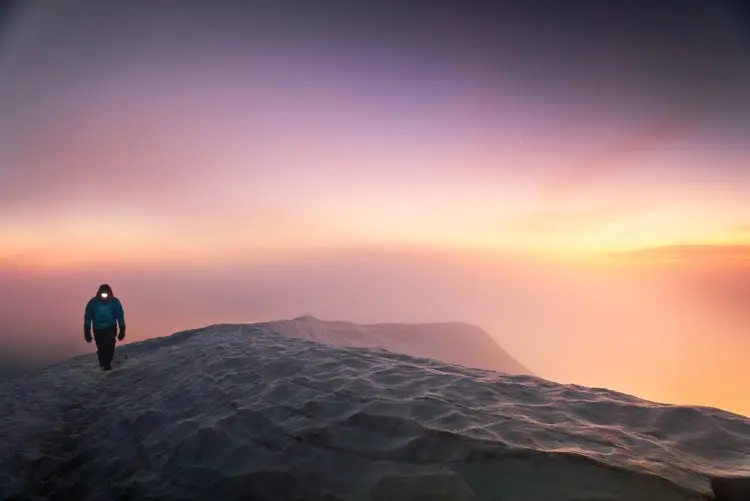
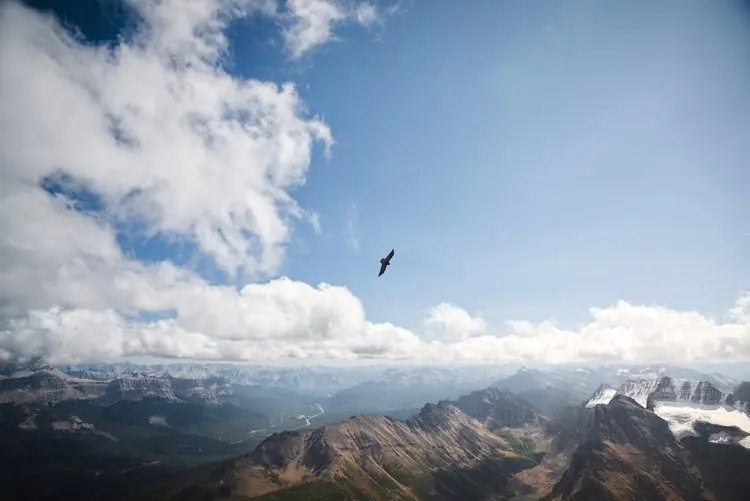
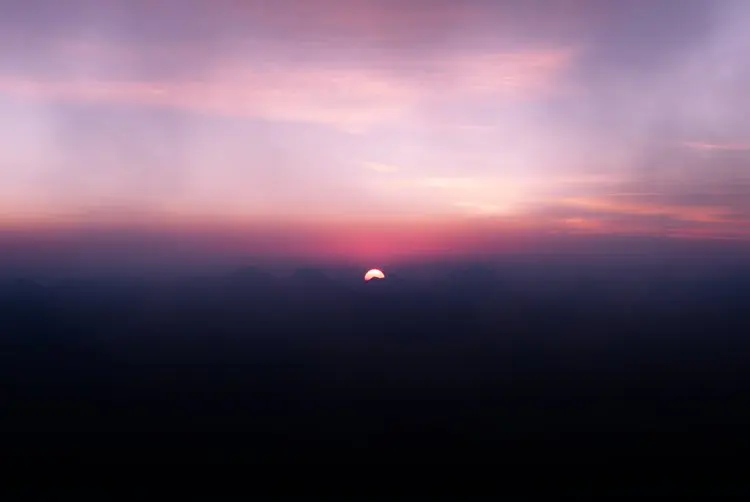
The first half of your approach is identical to that of Larch Valley and Sentinel Pass. Once you arrive there, and leave the switchbacks behind, looking up you’ll know there’s far more yet to come. The climb immediately begins when you depart the Pass, and from this point on be mindful of the potential dangers that lie above. Rockfall can be imminent from here forth along the route. Cairns and spray-painted markers are present to assist you; however, it is important that you review the Parks Canada Scrambler’s guide of Mount Temple, as some paths can be deceiving. Important waypoints to be aware of are the first grey rock band, the second grey rock band in which contains the crux, and the light brown rock step. At the crux, you will find an anchor bolted into the rock, which offers you the option to rope in. With the most technical segments behind you, you will have arrived at the false summit. Looking back in the direction from which you ascended, both Eiffel Peak and The Pinnacle can be seen dividing Paradise Valley to your right, and the Valley of the Ten Peaks to your left. The ridge and summit of Mount Temple will soon be visible but may be daunting as you confront the scree path, the final leg. At these higher elevations, typically above 10,000 feet (3,000 meters), lingering snow creates dangerous cornices and unstable, unpredictable ground. Additionally, your breathing is impeded as the air thins where you lose ⅓ of the amount of oxygen compared to that at sea level.
Unparalleled views in any direction grace the summit and await your arrival. The jaw-dropping sight of the endless cascade of mountains will be etched in your memory forever. You’ll gaze over the likes of Victoria Glacier which feeds Lake Louise, Hungabee Mountain which oversees Paradise Valley, Castle Mountain sheltering the Bow River, and of course the Valley of the Ten Peaks crowning one of the most pristine lakes on the planet. With these attributes, Mount Temple stands alone amongst the seemingly endless number of summits that Banff has to offer.
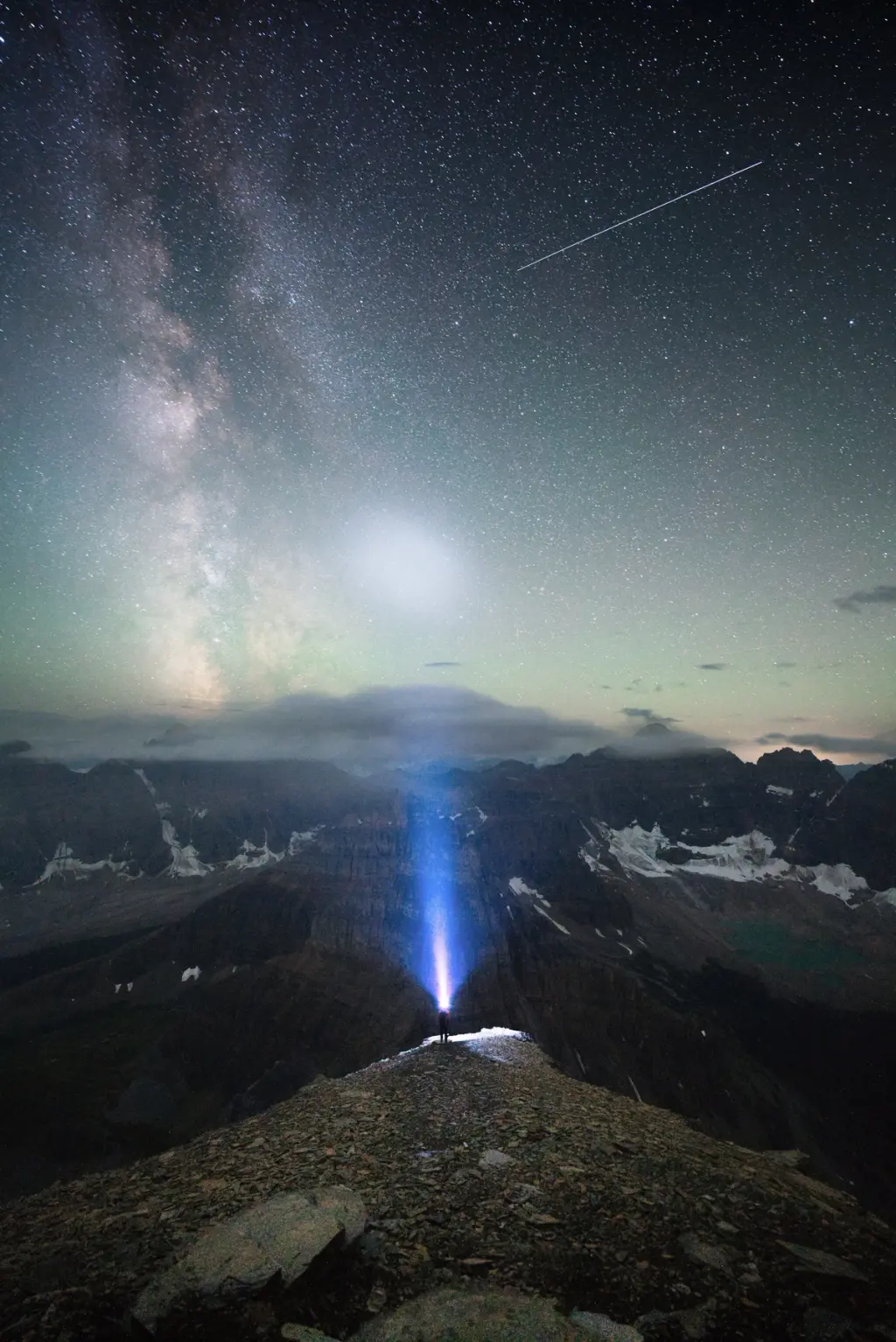
“This place made me feel like myself again, saved me when I had nothing left, made me feel like I mattered again when they all threw me away. I felt safe like I found somewhere I belonged – ”
“It makes you feel like you’re home. Like you could do anything. Like you have superpowers.”
“Exactly. Do good with your superpowers kid, you might just change the world.”
“It was me – wasn't it? The person you promised you’d change the world for.”
“I just wanted to make you proud.”
“I never truly understood why this place saved us, you and I. Is it the way that heaven’s rays ignite the peaks like candles or how the clouds glide over the land like silk, perhaps it’s the way a shooting star makes us smile, or maybe it’s just the smell of the air? I still don’t, and I may never. I think in a way that’s quite beautiful. Not knowing. That we yearn so desperately for distance and difference because they are the secret tonic to creativity and freedom. It makes us feel alive. We then find, that when we return home, the home remains the same but our perspectives have changed, and that changes everything. So, I suppose, there are no answers to the questions we ask. The very answers themselves are inconsequential. But the very act of pursuing them, the very reason as to what possesses us to act on the answers, gives us purpose. Bringing peace to our own lives. Maybe I can sleep now after all, or maybe…
It's time for our next adventure.”
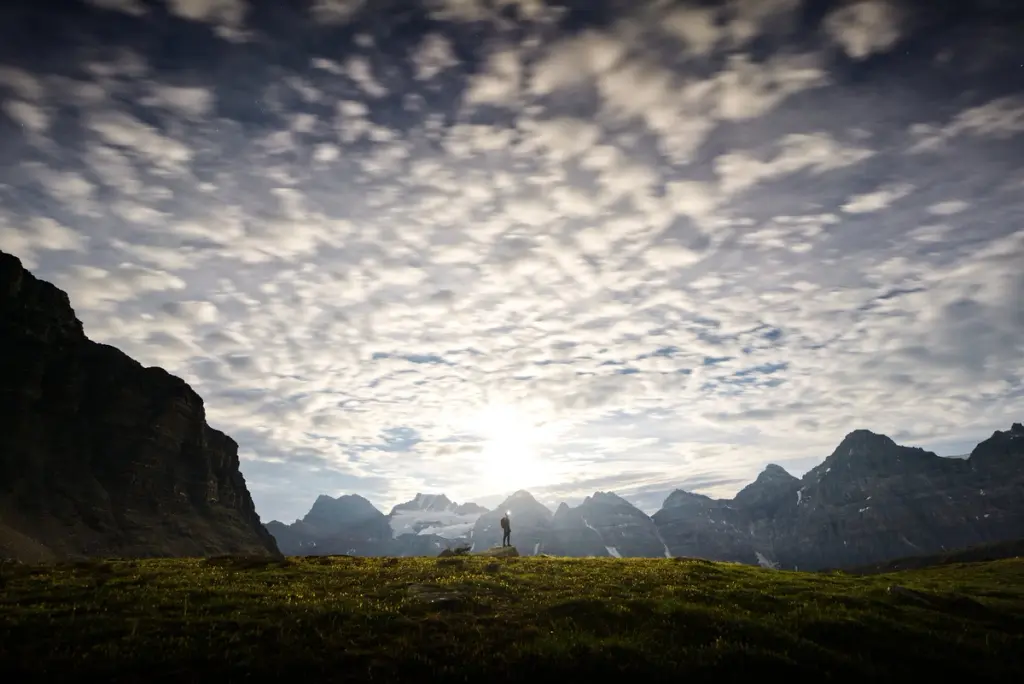
Important reminders:
- Parking can be very limited. Taking transit is the most environmentally sustainable way to visit Banff and Lake Louise, and it will also guarantee access to wherever you would like to go.
- Regardless of your mode of transport, a valid National Park Pass is required for your visit. Passes can be purchased online, at the park gates, or at visitor centers located in the town of Banff or Lake Louise.
- Packing in what you pack out is an essential practice when hiking and visiting for not only the wildlife’s safety but our own as well.
- Never approach or feed wildlife no matter the species or size.
- To minimize the risk of a negative encounter, make sure you are bear aware of and respect area closures and seasonal restrictions.
- Keep pets on a leash, knowing that wildlife’s survival may depend on it.
- Always carry bear spray year-round, and know how to properly use it.
- Obey speed limits, and slow down to protect wildlife and others on the road.
- Stay on designated trails to avoid damaging fragile species of plants.
- Ensure all watercraft are cleaned, drained, and dried and a permit is in possession while in use in the National Park.
Every action matters. The Natural world is for everyone. So, when we leave Banff National Park or any park for that matter. Let’s leave it wild.
I didn’t want to just put together a hiking guide for you, so instead, I have incorporated part of my personal story. Reflecting back, I often ask myself the question… ‘would my 8-year-old self be proud of me right now?’. This story is of a young boy lost and scared and ready to give it all up. Guided by what appears to be the wisdom of his older self, the boy discovers a love for the mountains, and in doing so finds his way back. Together, they adventure through the infamous Valley of the Ten Peaks in Banff National Park in search of answers.
It is an absolute honour to have this opportunity to share my story with you, a story I tell not only through words but through my lens. I sincerely leave with you a piece of myself as both the young boy and his older self. I call out to those who may also be struggling with mental illness and depression. It is imperative for me to tell you that you are heard and valued. In due time, you’ll look back and see that you too can move mountains.
~Mitchell

Mitchell Leong
Contributor
Born and raised in the beautiful yet unforgiving Canadian Rockies, these mountains have sculpted a relentless attitude for storytelling and conservation photography. From the lost corners of the frigid Icefields, the tallest of peaks that tower over the valleys, to the scorching hot deserts. Its my creed to come back with images and create art that has yet to exist. l am no content creator, influencer, or photographer; but a naturalist, who happens to tell visual stories. I never thought of myself as a photographer, instead, someone with the privilege to photograph. Using visual media as a bridge of empathy and understanding to others. With a minor in biological science, and a major in geoscience this knowledge has fostered a change in my perspective of not just imperative. Thus, bolstering the meaning and purpose to the art i choose to create. This mindset has opened doors to work with top brands, nonprofits, and magazines. From National Geographic to Tourism Canada, Mountain life magazine to Arc'teryx. I specialize in powerful adventure photography, whilst blending art, science, and conservation. This, to me, is what it truly means to have the camera to my eye.
